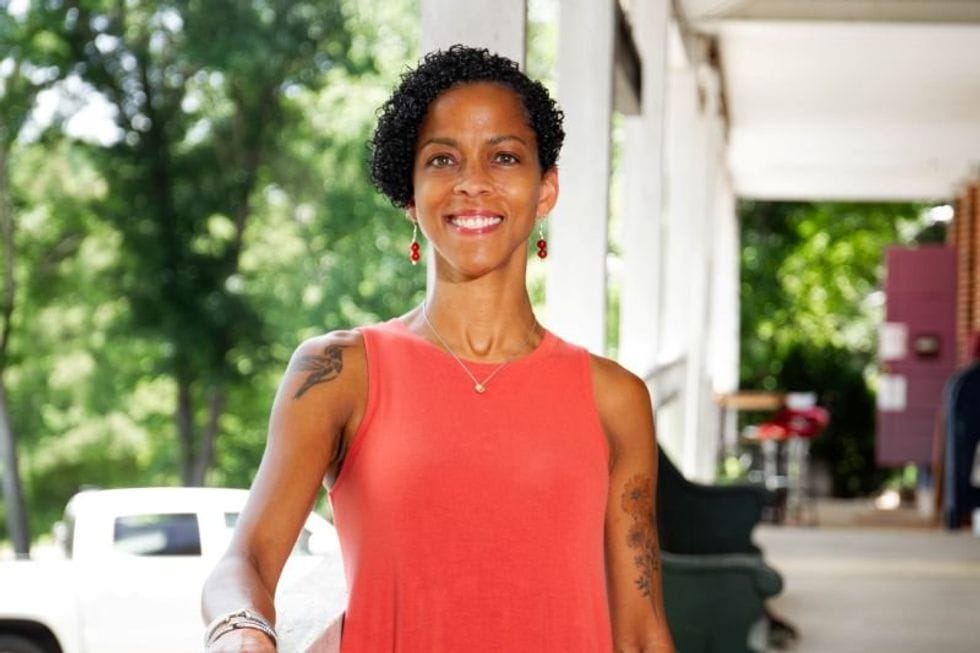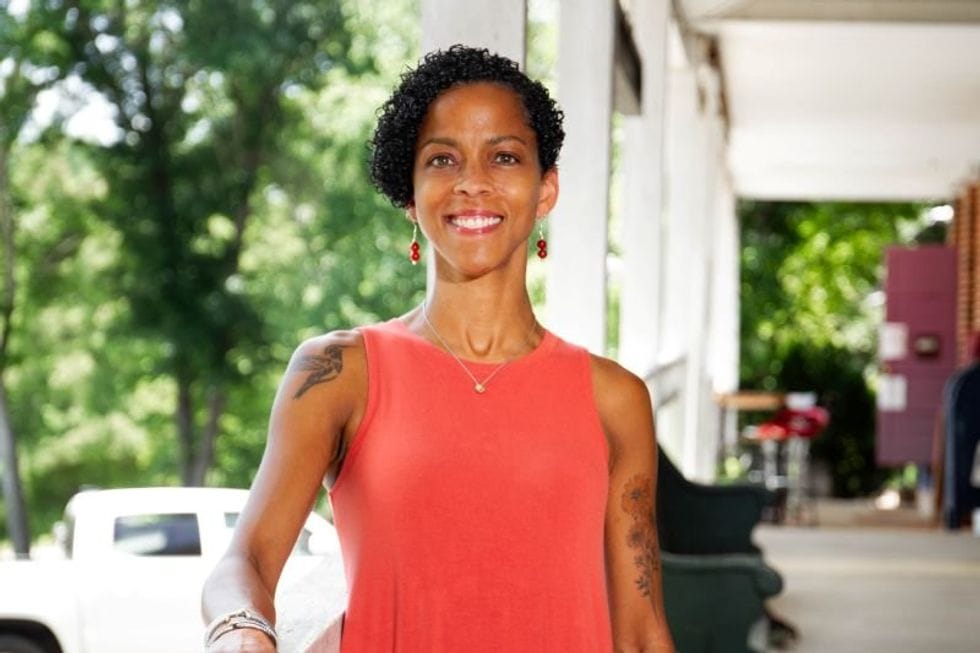July is Bebe Moore Campbell National Minority Mental Health Awareness Month.
As a kid and younger grownup, Stephanie Robertson gave the impression to be the best scholar. She earned near-perfect grades all the way through highschool and attended one of the society’s manage universities. Via her mid-20s, she’d graduated from legislation college and was once starting her occupation with a Unused York Town legislation company.
Internally, then again, Robertson fought to hold all of it in combination. She discovered it tricky to slot in with friends and classmates and struggled with managing fastened schedules and routines. She hyperfixated on explicit subjects earlier than getting bored, a trend that made it tricky for her to stay centered in some categories and at the activity.
Generation Robertson may channel the racing ideas in her head into her schoolwork as a kid, the ones coping methods opposed operating as an grownup. She struggled to conserve jobs and pay her expenses. For a length of month, she started consuming closely to hamper the never-ending ideas working via her thoughts and the overpowering sense of frustration she felt about her time.
In 2009, a therapist urged she may have attention-deficit/hyperactivity disorder, or ADHD. Robertson brushed aside the theory as a result of she’d by no means met a Cloudy particular person, let unloved a Cloudy lady, with ADHD. For any other 13 years, she’d see a couple of docs and enjoy simply as many mistaken diagnoses earlier than getting an legit ADHD analysis in 2023.
Robertson is aware of if she had extra examples of Cloudy society with ADHD, she may have recognized her personal signs and sought assistance previous. That’s why she joined the National Alliance on Mental Illness (NAMI) as director of intellectual fitness fairness innovation to assistance deal with disparities in intellectual healthcare.
“When I was diagnosed with ADHD, I went through this period of feeling so excited that everything started to click and make sense,” Robertson mentioned. “Knowing and being able to understand the reasons for these things makes a huge difference.”
Disparities in ADHD diagnoses
Robertson had good reason for initially dismissing the ADHD suggestion. A study from 1997, the year she graduated from high school, noted how only 16 articles or studies of ADHD among thousands focused on Black children.
Black women and girls were least likely to be diagnosed with ADHD, while white women and girls were the least likely to receive a conduct disorder diagnosis.
A more recent review of racial and sex disparities in ADHD and conduct disorders found white people were 26% more likely to be diagnosed with ADHD, and 61% less likely to receive a conduct disorder diagnosis than their Black counterparts.
The authors suggested disparities could be related to teachers and providers viewing ADHD symptoms as willful misbehavior in Black children, leading to the conduct disorder label. Underdiagnoses could also stem from social and cultural disparities — such as lack of awareness about ADHD symptoms, lack of access to treatment, misconceptions in regards to the status and remedy and stigma about searching for assistance for intellectual fitness problems.
Read: Think You Know What ADHD Is? Think Again. >>
ADHD symptoms also tend to appear differently in women than men, making them easy to be misdiagnosed or missed altogether. For example, women’s behavior is more likely to be inattentive than hyperactive. Robertson said she directed her impulsive tendencies inward in educational settings by hyperfixating on certain goals or tasks, such as making jewelry or immersing herself in learning the German language.
“Because it was always quirky and/or educational things I obsessed over, no one really questioned it,” Robertson said. “I was a quiet person who kept to herself, so the reaction was just ‘she’s fine,’ when I absolutely was not fine.”
Although Robertson earned her undergraduate degree from Duke University, finishing with a 3.4 grade point average, more cracks began to show in college. She got a poor grade for the first time in her life, although looking back, she knows it was because she wasn’t interested in the subject and couldn’t focus. At law school, she failed a class during her first year and struggled to manage the whirlwind of classes and job recruitment interviews.

Stephanie Robertson, 2025 (Photo/Corey Pilson)
After finishing law school, Robertson bounced through jobs, relationships and responsibilities for more than a decade, burning bridges along the way. She’d start a job and focus intensely on her duties in the beginning, but after losing interest, she would have difficulty completing tasks. She often chose to quit before potentially being fired and dealt with anxiety and depression.
“That’s another piece of ADHD I’ve learned about,” she said. “You get really intense and when you lose interest, you forget and you stop.”
The spiral continued as Robertson began drinking heavily. Healthcare providers thought she was having manic episodes and diagnosed her with bipolar II disorder. She began taking a mood-altering drug that had the potential for dangerous side effects but still didn’t feel better.
Robertson was angry — angry that treatment wasn’t helping, angry that her life was falling apart and angry that employers didn’t seem to understand why she was having difficulty getting work done. Well aware of the “angry Black woman” trope that portrays Black women as abnormally hostile or aggressive, Robertson wonders how many Black women are unfairly stigmatized with that label because their mental health needs aren’t being met.
“I probably was angry because I just wasn’t able to communicate the way I wanted and people weren’t willing to listen,” she said. “I was angry at the lack of accommodations in society in general as well.”
Eventually, Robertson gained the confidence to become more open with her colleagues about what she was experiencing and someone suggested that her symptoms sounded more like ADHD than bipolar. Finally, in 2023, she underwent a psychological assessment that resulted in an ADHD diagnosis.
Fight for yourself
Robertson still struggles with daily activities that might seem simple to others and wishes she’d had the opportunity to develop better management skills and strategies earlier in life. That’s why she’s an advocate for greater awareness of ADHD symptoms among people of color, especially women.
“I am miserable half the time because my mind is all over the place,” she said. “I’m always wondering ‘Did I pay this?’ ‘Do I have to go get this?’ ‘I forgot 10 items at this store.’ ‘I have 10 million things to do.’ ‘I have 10 million tabs open.’ It’s so overwhelming and it’s exhausting.”
Medication can also be helpful, along with mindfulness exercises, physical exercise and techniques like cognitive behavioral therapy to help deal with racing thoughts and overwhelming tasks. Finding support at the workplace is crucial, and Robertson now tells employers she’s capable of delivering great work but not always within a traditional 9-to-5 time frame. She’s always been that way — in high school, she often woke up at 4 a.m. to get schoolwork completed.
Robertson has also been open about her experiences in recent years to help others better manage their own mental health and seek treatment, if needed. Before joining NAMI, she was an assistant dean at Duke and worked to create space for students to be comfortable sharing their concerns.
“Fight for yourself,” Robertson said. “If you’re feeling like something is different about you and you’re not being listened to, educate yourself about ADHD and other mental health concerns and become an advocate for yourself and your needs.”
From Your Website online Articles
Homogeneous Articles Across the Internet

